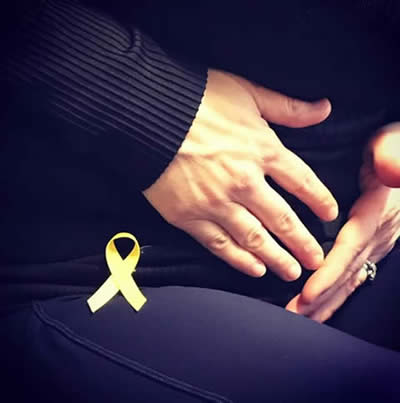Endometriosis and Chronic Pelvic Pain
How Endometriosis can cause or contribute to chronic pelvic pain, and what pelvic floor therapy can do to help alleviate it
Endometriosis is a condition where endometrial-like tissue grows outside of the uterus (endometrial tissue is tissue that usually grows inside of the uterus and sheds each month). The most common area for it to grow is in the abdominal cavity, where it can implant on the surface of other structures including the ovaries, bladder, rectum, and along the walls of the abdomen and pelvis. Endometriosis of the ovaries is called an endometrioma. Endometriosis of the uterus is called adenomyosis.
The true prevalence of endometriosis is unknown since it takes a laparoscopic procedure to confirm the diagnosis, and many women either have no symptoms or seek no treatment (Signorello, Harlow, Cramer, Spiegelman, & Hill, 1997). However, up to 78% of women undergoing laparoscopic investigation for infertility and up to 82% of women investigated for pelvic pain were found to have endometriosis in one study (Schenken, 1996; Wellbery). Across the general population, it is estimated that endometriosis occurs in 1 out of 10 women and girls.
Actress Lena Dunham has been vocal about her experiences with endometriosis, most recently publishing an essay in American Vogue on electing to have a total hysterectomy after years of chronic pain due to the condition (note, hysterectomy is not a cure for endometriosis, but is meant to treat adenomyosis (endometriosis of the uterus). Many other high profile women have also voiced their struggles with chronic pelvic pain, bringing increased awareness to this debilitating condition.
The most commonly reported symptom of endometriosis is pain that affects quality of life. This can include pain during menstruation, painful premenstrual cramps, pain with sex and penetration, bladder pain, and pain with bowel movements. In addition to contributing to pelvic pain, endometriosis has also been tied to infertility (Macer & Taylor, 2012). Women and girls often miss days of work and/or school due to the extreme levels of pain, sometimes accompanied by vomiting and often occuring with lower back pain, burning down the front of the thighs, headaches, TMJ dysfunction, irritable bowel disease and other concurring medical conditions.

The exact way in which endometriosis causes pain is somewhat of a debate
However a leading theory breaks down the issue as follows:
Endometrial tissue, whether inside the uterus or endometrial-like tissue outside of the uterus, is responsive to estrogen levels in the body (Gazvani & Templeton, 2002; Kitawaki et al., 2002), and these tissues grow and shed with the monthly cycle. While endometrial tissue in the uterus has a place to exit (via the vaginal canal), the areas of endometrial-like tissue in other areas of the body do not have a way to be shed, therefore causing peripheral and centralized pain, myofascial pain, along with physical changes in the body and inflammation. Endometriosis pain has also been found to fluctuate with mood and stress levels (Morotti, Vincent, & Becker, 2017).
Endo-Related Pain
Inflammation, scar tissue, and adhesions
Typically, organs and tissues in the abdomen and pelvis are slippery and have movement. Internal scar tissue can form into wide bands called adhesions, which attach to organs, muscles, and fascia, causing things to stick together and create problems such as abdominal and pelvic pain, vomiting, bloating, inability to pass gas, constipation, and painful sex.
With monthly cycles of growth and shedding, endometrial-like tissues can cause inflammation and the formation of adhesions. Layered on top of the monthly tissue changes, clients with endo often undergo many invasive diagnostic and treatment surgeries, including laparoscopic procedures and hysterecomies, which add even more scar tissue to the area.
Myofascial dysfunction and pain
Researchers have recently confirmed that endometriosis is tied to sensitization of pain receptors in the peripheral and central nervous system as well as myofascial dysfunction and pain (Stratton, Khachikyan, Sinaii, Ortiz, & Shah, 2015).
Myofascial pain is a common disorder that affects muscles in the body. People with myofascial pain may find hard nodules, or “trigger points” in the muscle that are painful with applied pressure. For folks with endo, they may have trigger points in the abdominal and pelvic areas that refer pain down into the lower pelvis - into the vaginal canal, pelvic floor, and rectum. The resulting pain causes the muscles of the pelvic floor to guard in protection, causing a negative spiral of even more muscle tension and pain.
Pelvic Floor Physical Therapy: A treatment for endo-related pelvic pain.
Pelvic floor physical therapy for endometriosis can help manage the associated pain, including pain brought on by endo-related medical procedures, thus helping to restore quality of life, sexual function, and empower those with endo with the tools they need to help manage symptoms in the long run.
Although pelvic floor therapy cannot reverse the endometrial growth that has occurred in the body, it can help manage the pain in the following ways:
- Training in self treatment techniques including foam rolling, lymphatic massage, autonomic relaxation, and stress reduction techniques
- Manual therapy to treat connective tissue dysfunction and myofascial trigger points
- Visceral mobilization (gentle massage techniques that loosen internal adhesions and restore movement to the organs including the intestine, bladder, uterus, and ovaries)
- Postural training and therapeutic exercise to treat dysfunctional movement
- Pelvic floor therapy to treat painful sex, sensitive tissues, pain with bowel movements
- Exercises for pelvic muscles to reduce pain, improve bladder retention, improve bowel function, and increase the flow of blood to the area
- Therapeutic yoga to improve lymphatic drainage and reduce chronic pain
- Neuromuscular re-education and autogenic relaxation to reduce chronic muscle over-activity, reduce pain, and improve sleep
Endometriosis Links:
- Endometriosis.org www.endometriosis.org
- ESHRE guidelines.endometriosis.org
- National Guideline Clearinghouse www.guideline.gov
- The Endometriosis Association www.endometriosisassn.org
Integrating other providers:
While pre- and post-operatively a pelvic floor physical therapist is typically the provider they will spend the most time with, other providers are also an integral part of the care team. This includes the endometriosis excision surgeon, clinical nutritionist (or registered dietician), mental health provider, gastroenterologist, urologist, pain management physician and more. The costs of accessing these services can be the difference between patients having positive outcomes or not. As our funding grows, so does our mission to provide no-cost comprehensive care to individuals that could otherwise not access these services.
Resources:
Aredo, J. V., Heyrana, K. J., Karp, B. I., Shah, J. P., & Stratton, P. (2017). Relating Chronic Pelvic Pain and Endometriosis to Signs of Sensitization and Myofascial Pain and Dysfunction. Seminars in Reproductive Medicine, 35(1), 88–97. http://doi.org/10.1055/s-0036-1597123
Becker CM, D'Amato RJ. Angiogenesis and antiangiogenic therapy in endometriosis. Microvasc Res. 2007;74(2-3):121-30
Bloski, T., & Pierson, R. (2008). Endometriosis and Chronic Pelvic Pain: Unraveling the Mystery Behind this Complex Condition. Nursing for Women’s Health, 12(5), 382–395. http://doi.org/10.1111/j.1751-486X.2008.00362.x
Macer, M. L., & Taylor, H. S. (2012). Endometriosis and Infertility: A review of the pathogenesis and treatment of endometriosis-associated infertility. Obstetrics and Gynecology Clinics of North America, 39(4), 535–549. http://doi.org/10.1016/j.ogc.2012.10.002
Morotti M, Vincent K, Becker CM. Mechanisms of pain in endometriosis. Eur J Obstet Gynecol Reprod Biol. 2017
Stratton, P., Khachikyan, I., Sinaii, N., Ortiz, R., & Shah, J. (2015). Association of Chronic Pelvic Pain and Endometriosis With Signs of Sensitization and Myofascial Pain. Obstetrics and Gynecology, 125(3), 719–728. http://doi.org/10.1097/AOG.0000000000000663
**This information is for educational purposes only and is not intended to replace the advice of your doctor.**




